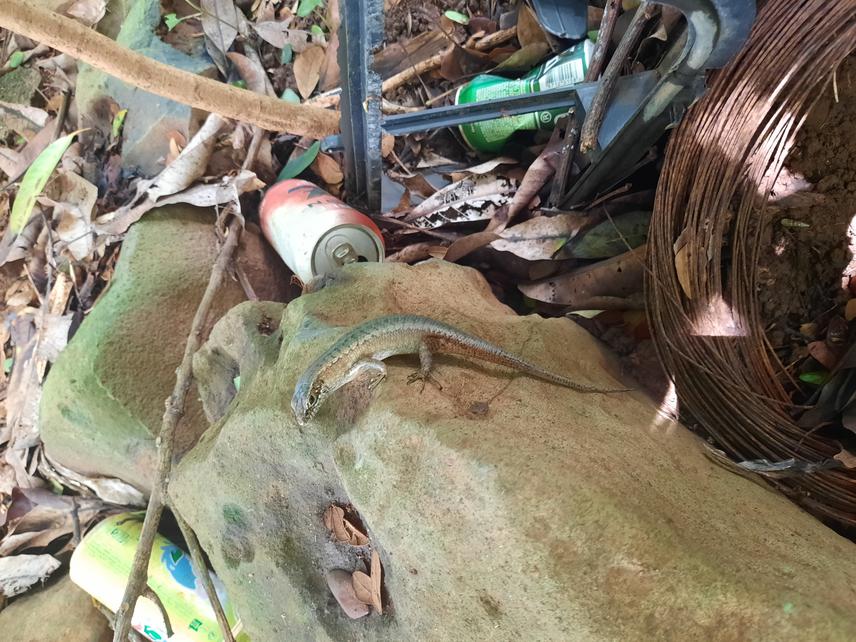Saoudati Maoulida
Insular species are particularly vulnerable to anthropogenic pressure as they often have small populations, small spatial ranges and limited ability to disperse in response to pressures, making them more susceptible to demographic stochasticity. This is the case of the Comoros Islands reptiles including geckos (Phelsuma spp.), skink (Trachylepsis comorensis) and iguana (Oplurus cuvieri comorensis) which are suffering one of habitat loss worldwide. In addition to the effects of habitat loss and fragmentation to these island’s species, the introduction since 33 years of the common Agama (Agama agama) in the Grande Comoro Island represents real threats to their survival. This invasive species encounters less competition from island endemics and, being genetically more adaptable, tends to expand its ecological niche that can conduct to the extinction of endemic species.

Skink of Comoros: Trachylepis comorensis. © Ibouroi Mohamed Thani.
The Agama agama was introduced to the Grande Comoros Island by 1990 and since then, the population of the species is continuously increased. Although the species was introduced on the Township of Moroni only, the species is currently recorded in the different parts of the island reducing the population size and home range of local and endemic species. They can cause cascading effects in native ecosystems by disrupting trophic interactions and sharing ecological resources with native species. Buckland et al. (2014) suggested that, reptile extinctions in Mauritius have mostly been due to the introduction of mammalian invaders, with 69% of its endemic reptile diversity lost since human colonization at the end of the 16th century. There is thus an urgent need to assess the spatial distribution, niches overlaps of Agama and local endemic reptiles at landscape levels and investigate effects of this invasion and the extinction risks of endemic species in order to develop relevant and efficient conservation actions.
The main objective of our project is to investigate the effect of biological invasion (especially the invasion of Agama agama to Comoros) on the population abundance and home range of native and endemic reptiles and their extinction risks.
We will assess spatial distribution, population size and niche overlaps of endemics and invasive species of reptiles in the Grande Comoro Island. According to our results, we will assess if we need to just limit geographic expansion of invaders, or to reduce their population sizes by eliminating certain individuals, or at worst if we need establishing an eradication programme for the total eradication of the species.
Header: Lycodryas cococola cococola. ©Hindatou Saidou.